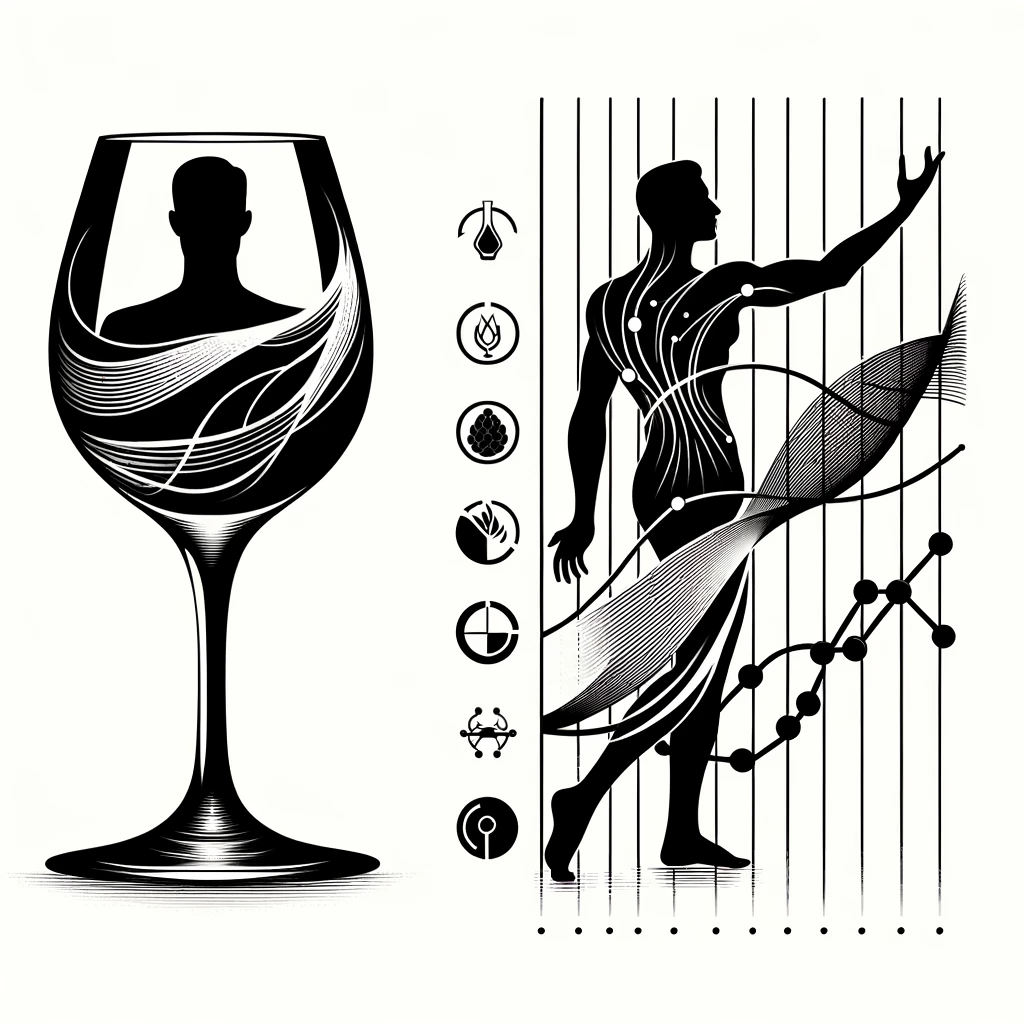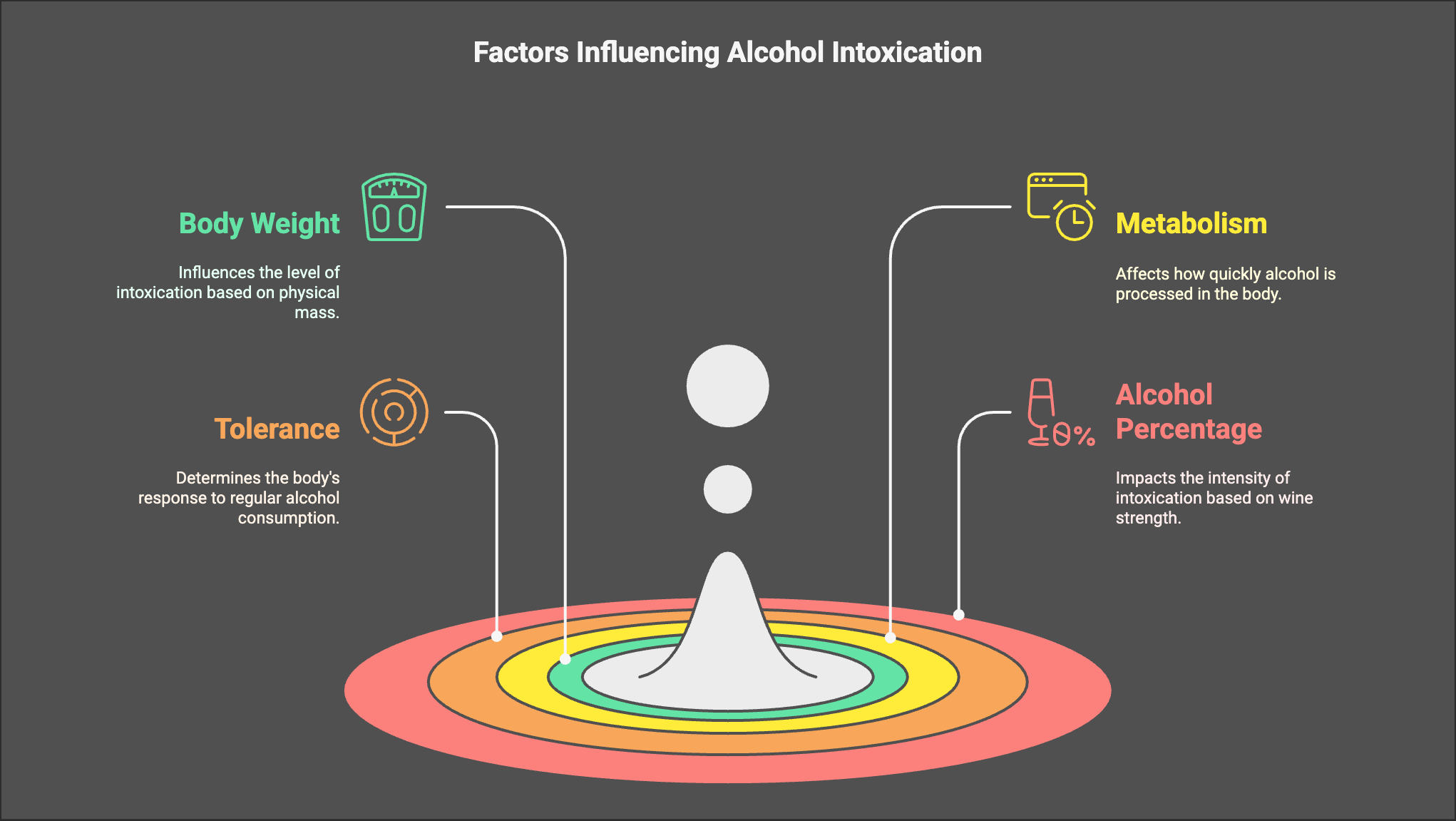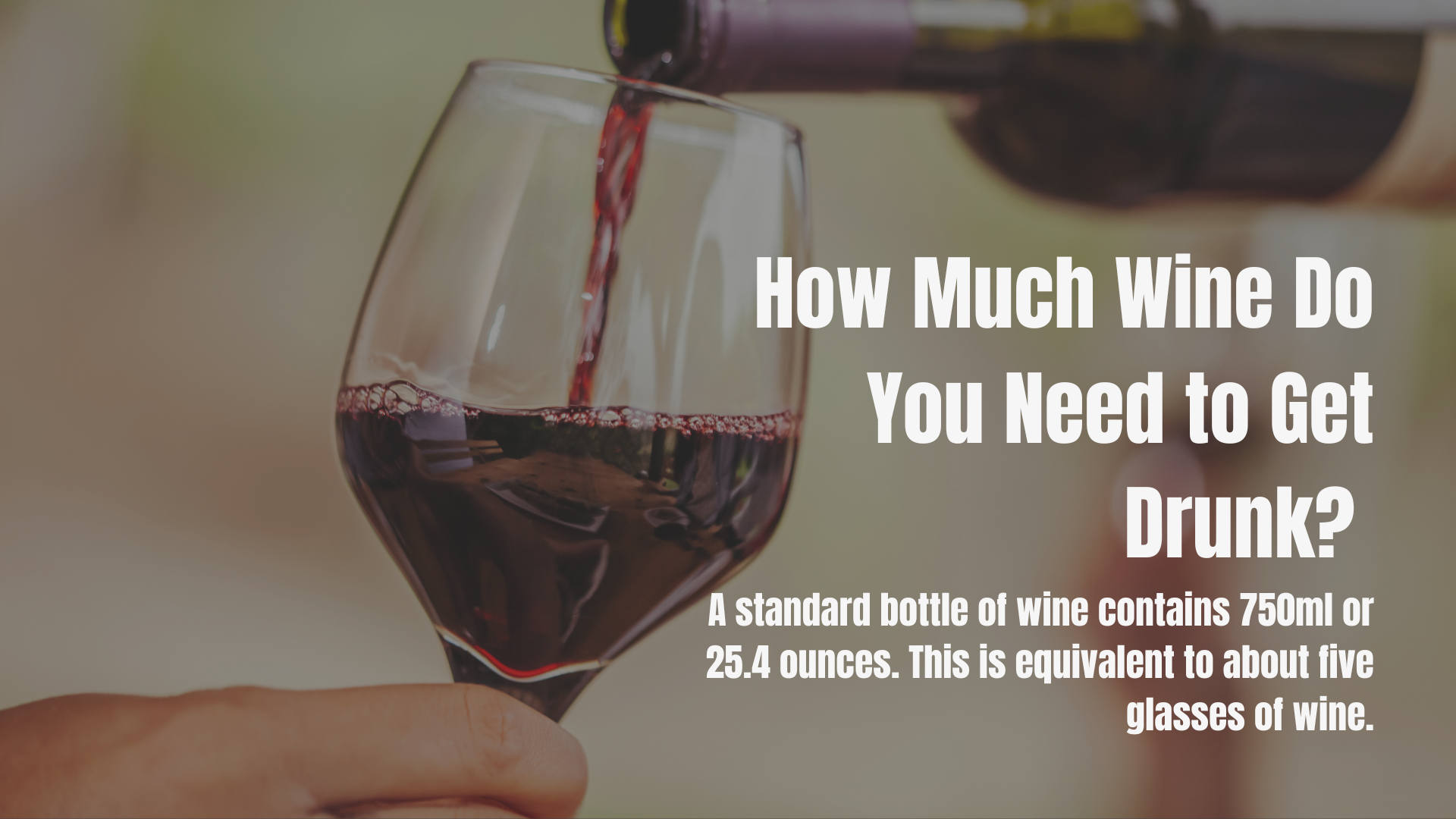How Much Wine Do You Need to Get Drunk?
We’ve all heard the phrase, “a glass of wine a day keeps the doctor away.” But how much do you need to drink before feeling the effects?
Let’s explore the science behind how your body processes alcohol and find out exactly how much wine it takes to get drunk.
Many of us enjoy wine, but it's important to remember that it's also an alcoholic drink and should be consumed responsibly.
Please note that this blog is intended for informational purposes only and does not represent medical or healthcare advice. We are not a healthcare center nor qualified to provide guidance on alcohol consumption. Our aim is to share knowledge and insights related to wine, but we strongly encourage our readers to seek advice from healthcare professionals for personal recommendations and guidance regarding alcohol consumption and its effects.
How much wine to get drunk
It's important to approach wine consumption with moderation and mindfulness, as the effects of alcohol can vary greatly depending on individual factors like body weight, metabolism, and tolerance.
Healthcare professionals generally advise that women limit their intake to no more than one glass of wine daily, while men should not exceed two glasses daily. This guideline helps maintain health and safety, considering the risks associated with excessive alcohol consumption.
Remember, the legal limit for driving is typically reached after consuming about three glasses of average-strength wine, highlighting the need for caution.
Individuals who are new to drinking or have a low tolerance might feel the effects of alcohol even with smaller amounts. Therefore, it's crucial to understand and respect your body's limits to ensure both your well-being and the safety of others."
Can Eliminate Wine Sensitivities, Allergies, and Histamines
Drop It Original Wine Drops 2 Pack | Naturally Reduces Wine Sulfites & Tannins
IMPORTANT TO REMEMBER
The amount of wine you drink to get drunk depends on several factors, including your weight, gender, and wine type.
Generally, it takes about four glasses of wine for a 160-pound person to become legally drunk.
Women tend to get drunk faster than men because they have less water in their bodies.
The type of wine also affects how quickly you'll get drunk. Red wine has a higher alcohol content than white wine, so it will get you drunk faster.
If you're trying to get drunk quickly, avoid drinking sparkling wines or wines with low alcohol content.
Drink Water with Wine: Stay Clear and Happy
You should also drink water when you're drinking wine. Water keeps our body working well, even when we have wine. It can help us from feeling too dizzy and can also help us avoid a bad headache the next day. So, the next time you're having wine, remember to have a glass of water nearby. It's a smart way to enjoy your wine and feel good at the same time.
AVERAGE ALCOHOL LEVEL WINE
If you would like to learn more about the alcohol content in wine, please click here.
Alcohol Content in Different Types of Wine
The amount of alcohol in a single glass of wine can vary widely depending on the type of grape used and the brewing process. Generally speaking, red wines tend to have higher alcohol content than white wines due to longer fermentation times, with some reaching up to 15% ABV (alcohol by volume). White wines typically range from 8-12% ABV, while sparkling wines fall somewhere in between.
1. A Bottle of Wine
A standard bottle of wine contains 750ml or 25.4 ounces. This is equivalent to about five glasses of wine. If you are drinking a bottle of wine alone, it will take about two and a half hours to finish.
2. A Glass of Wine
A standard glass of wine contains 150ml or 5 ounces. This is equivalent to about one-third of a bottle of wine. If you are drinking a glass of wine yourself, it will take about 30 minutes to finish it.
3. A Shot of Wine
A shot of wine contains 30ml or 1 ounce. This is equivalent to about one-sixth of a bottle of wine. If you are drinking a shot of wine by yourself, it will take about 10 minutes to finish.
4. A Half Glass of Wine
A half glass of wine contains 75ml or 2.5 ounces. This is equivalent to about one-eighth of a bottle of wine. If you are drinking a half glass of wine by yourself, it will take about 15 minutes to finish.
5. A Quarter Glass of Wine
A quarter glass of wine contains 37ml or 1.25 ounces. This is equivalent to about one-sixteenth of a bottle of wine. If you are drinking a quarter glass
How Your Body Processes Alcohol
Alcohol is absorbed into your bloodstream through your stomach and small intestine. When you drink more than your body can process at once, the excess alcohol is stored in fat cells until it can be metabolized.
Depending on factors such as age, gender, weight, and metabolism rate, your body usually takes about an hour to break down one standard drink (just over 5 ounces of wine).
The Effects of Drinking Wine
Drinking wine can have a variety of effects on your body, both positive and negative. Short-term effects of drinking wine include improved mood, lowered anxiety, and increased relaxation. However, drinking too much wine can lead to dehydration, headaches, and nausea.
Long-term effects of drinking wine include an increased risk of developing cancer and heart disease.
Drink Wine Responsibly
If you choose to drink wine, it is important to do so responsibly. This means drinking in moderation and avoiding driving or operating heavy machinery after consuming alcohol. It is also important to be aware of the signs of alcohol poisoning and to get medical help if someone appears to be suffering from it.
Excessive alcohol consumption can seriously affect an individual's health and well-being. It's important to understand that the effects of alcohol can vary greatly depending on a person's weight, tolerance, and overall health and that excessive alcohol consumption can lead to serious health problems and even death.
Tips for Drinking Wine
You can do a few things to make drinking wine more enjoyable and less likely to lead to negative consequences.
Firstly, choose a type of wine that you enjoy and that has a lower alcohol content. Secondly, drink slowly and savor each sip. Finally, make sure you stay hydrated by drinking water between glasses of wine
How to Calculate Wine Alcohol Content
Wine's alcohol content is typically expressed as a percentage of its volume (ABV, or alcohol by volume). There are several ways to gauge wine alcohol content, but the following are the most popular ones:
Method using a hydrometer: This approach is straightforward and widely used. A hydrometer, which measures a liquid's specific gravity, can be used to ascertain the amount of alcohol in wine. Before and after fermentation, the specific gravity of wine is measured, and the difference between the two readings provides a clue as to the amount of alcohol present.
This method of measuring wine alcohol by ebulliometer is more precise. It entails measuring the temperature at which the alcohol boils off from a sample of wine. An ebulliometer, a specialized piece of equipment, is needed for this technique.
Chromatography Method: This is the most expensive, complicated, and accurate way to measure wine's alcohol content. To separate the components of the wine and ascertain its alcohol content, a gas chromatography device is used.
The hydrometer method is usually adequate for determining the amount of alcohol in wine, but more precise techniques might be needed for regulatory compliance or quality control.
Interested in exploring the fascinating world of non-alcoholic wines? Our blog features detailed articles and insights into non-alcoholic wine varieties, perfect for those looking to enjoy the essence of wine without alcohol. Click here to dive into our non-alcoholic wine section and expand your wine knowledge!
Conclusion: As fun (and delicious) as it can be to enjoy a glass of wine now and then, moderation is key in alcoholic beverages. Knowing exactly how much is too much is an important part of responsible drinking - after all, no one wants to get too drunk!
Hopefully, this article gave you a better understanding of what it takes for someone to get drunk on wine - just remember that everyone’s body respond differently, so make sure you know your limits!
Cheers!









